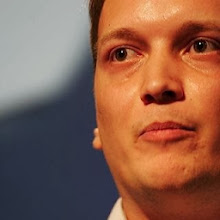What was the plan?
(this is the second part in the "What happened on October 5th" miniseries, part one can be found here)
In its Declaration on the Future of Serbia, adopted on July 30th 1999, Otpor advocated the strategy for transition of power through free and fair elections, with the idea of united front against Milosevic. Otpor also stressed the importance of mobilizing the population to vote, but also of promoting “individual resistance” i.e. nonviolent methods of civic disobedience in order to counter possible electoral fraud. This strategy was slowly embraced by the opposition parties in the months to come, but at the time nobody had taken it seriously.
The strategy was based on two assumptions:
- that the opposition had to be united, to have one presidential candidate in a run in order to get more votes than Milosevic
- that Milosevic would never accept the defeat at the elections (that he would falsify ballots and even use armed forces to defend his power)
The strategy was derived from a decision to use elections as a tool of change, since legitimacy of the opposition could only be established in the election process. Opposition needed to unite, to have one candidate in order to maximize its chances. Otpor and the resto of the civil society, on the other hand, would mobilize the population to “get out and vote” in order to raise voter turnout and opposition’s chances of victory.
Soon after adopting this strategy Otpor applied pressure on the opposition parties to work together. The idea of united opposition was “deus ex machina” for Serbians and the pressure on the opposition was backed by NGOs, media, even ordinary people, so the opposition had to comply – in early 2000 they established coalition DOS, Democratic Opposition of Serbia. In July they announced that Vojislav Kostunica, president of Democratic Party of Serbia would be their candidate to confront Milosevic at the presidential elections scheduled for September 24th. Although not very strong at that moment, Kostunica had two traits that worked in his advantage: he was a moderate nationalist, making job of portraying him as a traitor harder, and he was not corrupt. With the help of other parties in DOS, Serbian civil society, independent media and Otpor he was bound to win.
Prevention of electoral fraud was an important element of the strategy. It had originated from Otpor but was fully developed by DOS in summer 2000, mainly building on previous experience. Local elections in 1996 were fraudulent, provoking protests in major Serbian cities that lasted for months, before Milosevic was finally coerced to accept opposition victory . Presidential elections in 1997, boycotted by most opposition parties, were even more fraudulent – it was natural to expect that elections in 2000 would be no better .
The question was how to respond. It was not enough to have election observers present at the polling stations. It was necessary to systematically report the fraud and mobilize people to stand against it and force the regime to step down.
Repeating 1996-1997 protests was out of the question. Opposition learned from that experience how hard it was to maintain presence in the streets for months. So this had to be swift, one day protest if possible. But there was another concern – if it was one day protest it must not be another March 9th 1991.
March 9th demonstrations were first serious challenge to Milosevic’s rule. Serbian Renewal Movement of Vuk Draskovic called for a rally to protest State controlled television biased reporting. Milosevic sent in the police to crush the protest with tear gas and water cannons. Protesters stroke back and the situation got out of control. By the end of the day Milosevic sent in the Army with tanks, Draskovic was arrested and the protest was crushed.
In order to avoid another March 9th the opposition had set up to fulfill two objectives:
- Bring at least one million people to Belgrade
- Ensure that order to shoot is not followed by the armed forces
One million was enough to crowd narrow Belgrade streets and make movements of troops almost impossible. It would be relatively easy to disperse 50,000 or even 100,000 people because they would be concentrated in a single city square. Crowd ten times as big would fill all the streets in the city center and paralyze the city.
If it would be impossible to disperse protesters with the use of tear gas, the regime would have to order the Police to shoot. If this failed, the regime would have to call in the Army. That is why it was also important to create a situation where police officers and soldiers refuse orders to shoot.
Bringing one million people to Belgrade was not that complicated. Opposition just needed to win the elections and expose the electoral fraud. In ten days following the elections between September 24th and October 4th blockades and strikes all over Serbia brought a country to a standstill. When opposition announced the rally in front of the Federal Parliament in Belgrade everybody responded.
Making sure that the armed forces don’t crush the protest was much harder, and it took more time to persuade them not to shoot. Strategy that designed for the Army was different from the strategy targeting the Police. Special security forces had to be included in the plan too. We shall take a closer look at this element of the strategy in my next post.
>">Tweet


0 Comments:
Post a Comment
<< Home